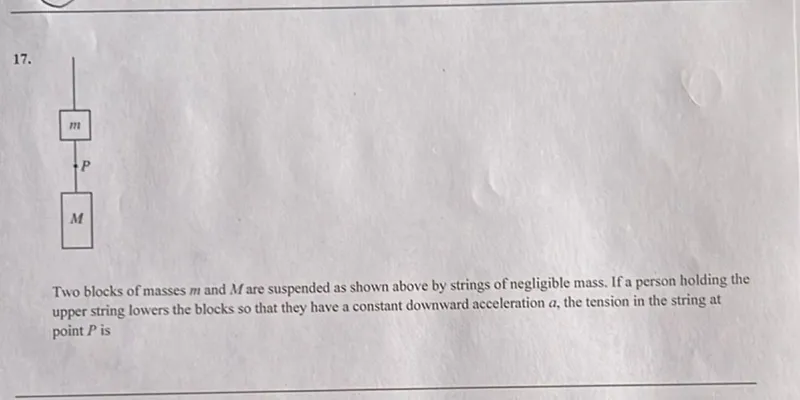Questions: Two blocks of masses m and M are suspended as shown above by strings of negligible mass. If a person holding the upper string lowers the blocks so that they have a constant downward acceleration a, the tension in the string at point P is

Transcript text: 17.
Two blocks of masses $m$ and $M$ are suspended as shown above by strings of negligible mass. If a person holding the upper string lowers the blocks so that they have a constant downward acceleration $a$, the tension in the string at point $P$ is





